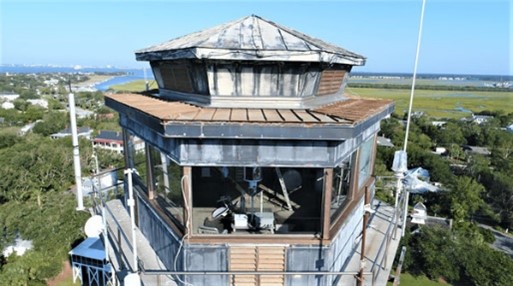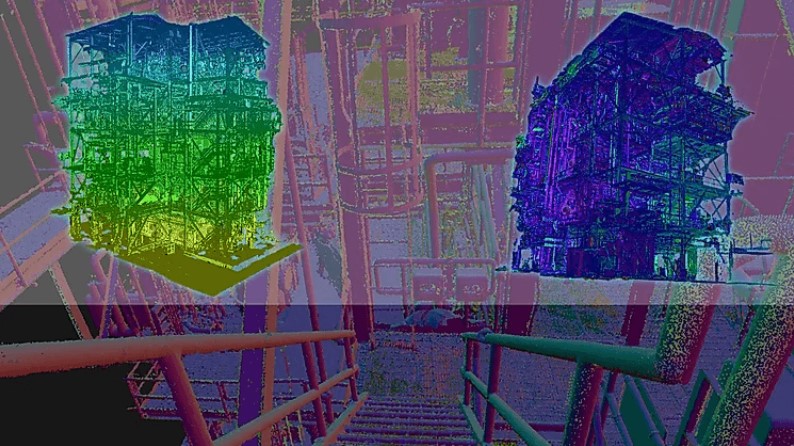Beyond Boundaries: Explore the Possibilities of Drone Surveying & Photogrammetry Services
PMC's Drone Photogrammetry services deliver high-quality results through advanced capture technologies. With our team of FAA-licensed pilots, we collaborate with you to provide comprehensive drone and sUAS services for aerial video, building as-builts, and photogrammetry.
We offer the option of RTK control, enabling the generation of point clouds from 2D photos that rival traditional laser scanners in terms of data accuracy. Trust PMC as your reliable partner for all your drone-related needs.
SQFT Scanned
Projects Completed
Satisfied Customers
Experience
Drone technology is pivotal in our Reality Capture process.
- PMC utilizes the latest state-of-the-art sUAS equipment to deliver the best results. Our equipment utilizes survey grade RTK corrections (GPS) data so you can expect to see accuracy of +-2CM across a large project.
- The data may comprise a few dozen or even several thousand high-resolution pictures. Photogrammetry software stitches all the images together into one 3D representation of the subject. This process creates a high definition point cloud, much like what you would expect from a terrestrial laser scanner, just not as dense. This is especially useful on projects that include areas like roofs and towers which a terrestrial laser scanner can not reach.
- Why does this matter? Being able to capture areas up high and out of sight with sUAS is much safer than traditional methods, which might include climbing with some sort of measuring apparatus like a tape measure or a laser disto-meter. These methods typically introduce error as the risks of getting to the area of interest are very high. Eliminating the need for humans to climb to the area of interest eliminates a large amount of the overall cost as well, because typically the climb to the top of a cell tower takes longer than the actual work to perform. You have to ask yourself, “Do I need to send a person up, or can I gather all the information that I need from high-definition imagery consolidated into a highly accurate point cloud, which can be measured and inspected as though I were right there?”
Get a competitive laser scanning quote today!
Benefits of Drone Surveying and Photogrammetry
- Efficiently document ornate building details for repair and restoration
- Document tall structures with high-resolution imagery
- Generate detailed point clouds to precisely replicate intricate cornices and challenging architectural elements.
- Coordinate material intake and trade staging through progress tracking using sUAS.
- Capture and create measurable content for construction environments management.
- Streamline workflows, minimize delays, and improve coordination.
- Eliminate the need for humans to enter hazardous environments.
- Collect data faster, reduce reliance on manual inspections, and optimize resources.


Drone Surveying and Photogrammetry Services Applications
Architecture
Provide architects with accurate and detailed aerial data, enabling precise site analysis, mapping, and 3D modeling for effective design and planning.
Construction
Offer valuable aerial data and 3D models for accurate site assessment, progress monitoring, and streamlined construction workflows.
Natural Resource Management
Support environmental monitoring, vegetation mapping, and land conservation efforts, providing valuable insights for sustainable resource management and allowing for environmental change tracking.
Engineering
Provide detailed aerial data and 3D models, aiding in project planning, design validation, and efficient infrastructure development.
Power, Gas, and Telecommunications
Allow accurate mapping of power lines, gas pipelines, and telecommunication towers for maintenance planning and assisting in regulatory compliance.
Infrastructure Inspection
Provide detailed visual data and accurate measurements for assessing the condition of bridges, roads, buildings, and other critical infrastructure assets.
Emergency Response and Disaster Management
Provide rapid and accurate aerial assessment of affected areas, enabling efficient damage assessment, search and rescue operations, and disaster response planning.
Our Drone Surveying and Photogrammetry Experts
PMC's drone surveying and photogrammetry experts are highly skilled in utilizing advanced technology to capture precise data. With professional-grade drones and expertise in photogrammetry, our team delivers high-quality aerial imagery and accurate 3D models. Whether it's for construction, land surveying, or infrastructure inspection, our FAA-licensed pilots ensure reliable and efficient surveying solutions.

Related Service: Multiple Site Laser Scanning Services

PMC's multi-site solutions offer access to accurate 3D data, streamlining visualization and analysis. Our innovative approach improves information management across locations, saving time and boosting productivity. BIM integration through EFI enables direct access to asset data, providing a comprehensive view of assets in one place.
Check out some of our Drone and Photogrammetry Service Case Studies below!
Frequently Asked Questions for Drone Surveying and Photogrammetry Services
- Imagery: Drones are equipped with high-resolution cameras that capture aerial photographs or videos of the area of interest. These images can be used for photogrammetry, where multiple images are processed to create detailed maps, 3D models, or orthomosaic images.
- Lidar:Some advanced drones are equipped with Lidar (Light Detection and Ranging) sensors, which emit laser pulses and measure the time it takes for the laser to return after hitting an object. Lidar enables the creation of highly accurate 3D point clouds, which are used for mapping, terrain analysis, and infrastructure inspection.
- Thermal Imaging: Drones can also carry thermal cameras that detect heat signatures and capture thermal images. This is particularly useful in applications such as building inspections, search and rescue operations, or monitoring thermal patterns in agricultural fields.
- Multispectral and Hyperspectral Imaging: Drones can be equipped with sensors that capture images in multiple bands of the electromagnetic spectrum, including visible, near-infrared, and thermal bands. This allows for the analysis of vegetation health, crop monitoring, and environmental assessment.
- Gas and Chemical Sensors: Specialized drones can carry sensors capable of detecting and measuring specific gases or chemicals in the atmosphere. These sensors are commonly used in environmental monitoring, industrial inspections, and detecting gas leaks.
- Surveying and mapping: Drones can capture high-resolution aerial images, collect geospatial data, and create detailed maps and 3D models of land areas, construction sites, and infrastructure projects.
- Construction and site monitoring:Drones provide real-time aerial views of construction sites, allowing for progress monitoring, site planning, and identifying potential issues or deviations from plans.
- Agriculture: Drones equipped with multispectral or thermal cameras can assess crop health, monitor irrigation, detect pest infestations, and assist in precision agriculture practices.
- Environmental monitoring: Drones enable the monitoring of natural resources, wildlife habitats, and ecosystem changes, aiding in environmental conservation efforts and research.
- Infrastructure inspection:Drones can safely inspect bridges, buildings, power lines, and other infrastructure, capturing high-resolution imagery and identifying potential maintenance or safety issues.
- Disaster response and assessment:Drones provide rapid aerial assessment of disaster-affected areas, aiding in search and rescue operations, damage assessment, and planning for recovery efforts.
- Real estate and property management:Drones can capture aerial views and create immersive virtual tours of properties, assisting in marketing, property assessments, and facility management.
- Flight planning:The operator selects the area to be mapped and plans the flight path for the drone. This includes determining the altitude, overlap, and grid pattern to ensure comprehensive coverage.
- Data capture:The drone is launched and flies along the predetermined flight path, capturing images or data at regular intervals. The onboard camera or sensor collects visual imagery, thermal data, LiDAR scans, or other relevant information depending on the mapping requirements.
- GPS positioning: Drones use GPS technology to precisely track their position and altitude during the flight. This allows for accurate georeferencing of the captured data, essential for creating maps or 3D models.
- Image processing: Once the drone completes its flight, the captured images or data are transferred to a computer for processing. Software tools like photogrammetry or LiDAR processing software are used to stitch the images together, align them, and create a high-resolution mosaic or point cloud.
- Data analysis and visualization:The processed data is analyzed and interpreted to extract the desired information. This can involve generating 2D orthomosaic maps, 3D models, elevation maps, volumetric measurements, or other data outputs depending on the specific application.
- Reporting and deliverables:The final outputs are typically presented in the form of maps, models, or reports, depending on the project requirements. These deliverables provide valuable insights for various purposes such as land surveying, infrastructure planning, environmental monitoring, or asset management.
- Real estate and property management:Drones can capture aerial views and create immersive virtual tours of properties, assisting in marketing, property assessments, and facility management.
Drone and Photogrammetry Service projects
- Date
- March 18, 2020
Many design engineers of custom manufacturing and processing equipment are faced with a unique challenge. Prior to drafting a proposal, they perform a walk through of the client’s […]- Date
- February 27, 2020
Mega projects that exceed 1,000,000 sq. ft. or 100,000 sq. meters are a PMC specialty. Our teams have some of the most experience in the industry […]
Contact Us
Please write your questions in the following form and we will get to you as soon as possible. We look forward to helping you achieve your goals.




